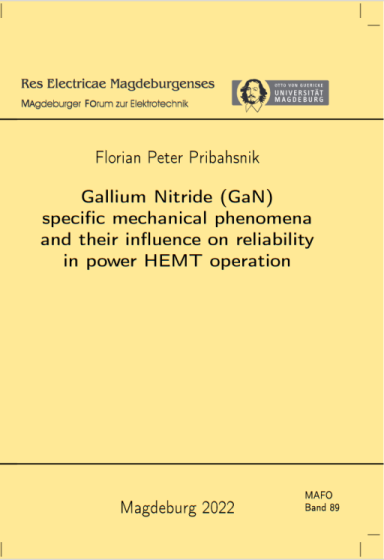Vol. 89 (2022): Pribahsnik, Florian Peter: Gallium Nitride (GaN) specific mechanical phenomena and their influence on reliability in power HEMT operation

In recent years Gallium Nitride (GaN) has entered the market for power devices on a broader scale, increasing the need for a deeper understanding of fundamental interactions within such devices. Extensive research has been conducted in the field of electric effects since the main differences of GaN over Silicon (Si) lie there. In contrast to this, this thesis will focus on new mechanical and thermo-mechanical phenomena, previously not occurring in Si devices. Chapter 3 will introduce the interactions of the mechanical stress, the temperature and the electric field. The effects connecting these state variables are explained in detail and it will be shown which effects can be neglected and which ones need closer investigations. In Chapter 4 the thermal capabilities under massive thermal overload, caused by a short circuit pulse, are discussed. The setup, which is used to stress the chips until failure, is presented. Failed devices are analyzed extensively by in depth physical failure inspection methods. Root cause analysis is done by means of Finite Element Analysis (FEA) and in depth physical failure analysis, finally enabling to provide suggestions for improvements in this particular failure mode. Chapter 5 will elaborate on resonance phenomena in GaN. Since GaN is piezoelectric it can act as an actuator to resonate the whole chip assembly. This phenomenon is measured in two steps and subsequently investigated by FEA. The Finite Element (FE) simulation results are validated against the measurements to ensure the correctness of the FE model. From these simulations conclusions regarding the reliability of the two most failure prone layers, namely the GaN stack and the die attach layer, are drawn. Additionally extreme cases are discussed giving an outlook on this issue in advanced package assemblies.
DOI: https://doi.org/10.24352/UB.OVGU-2022-051
ISBN: 978-3948749-17-0

